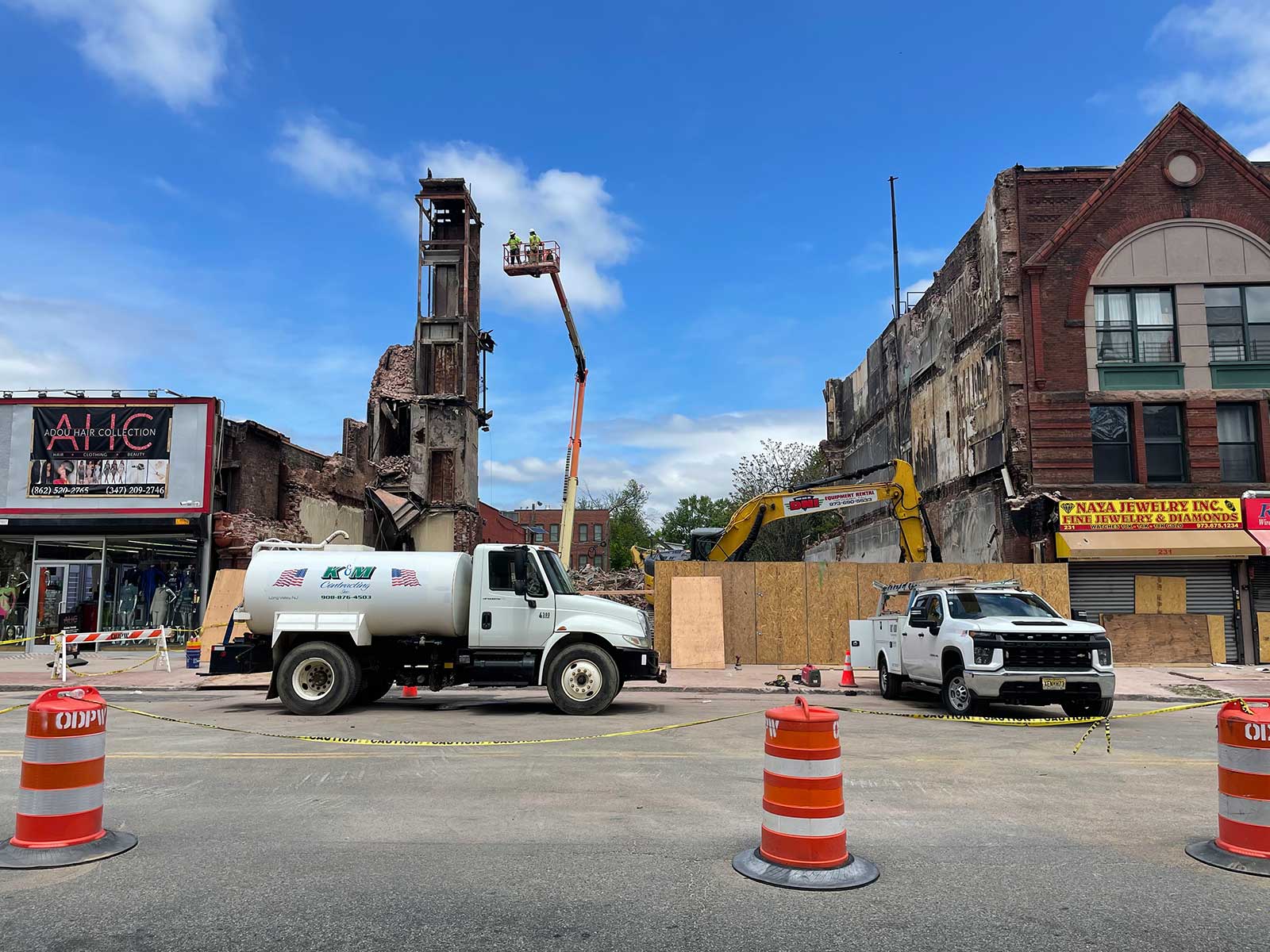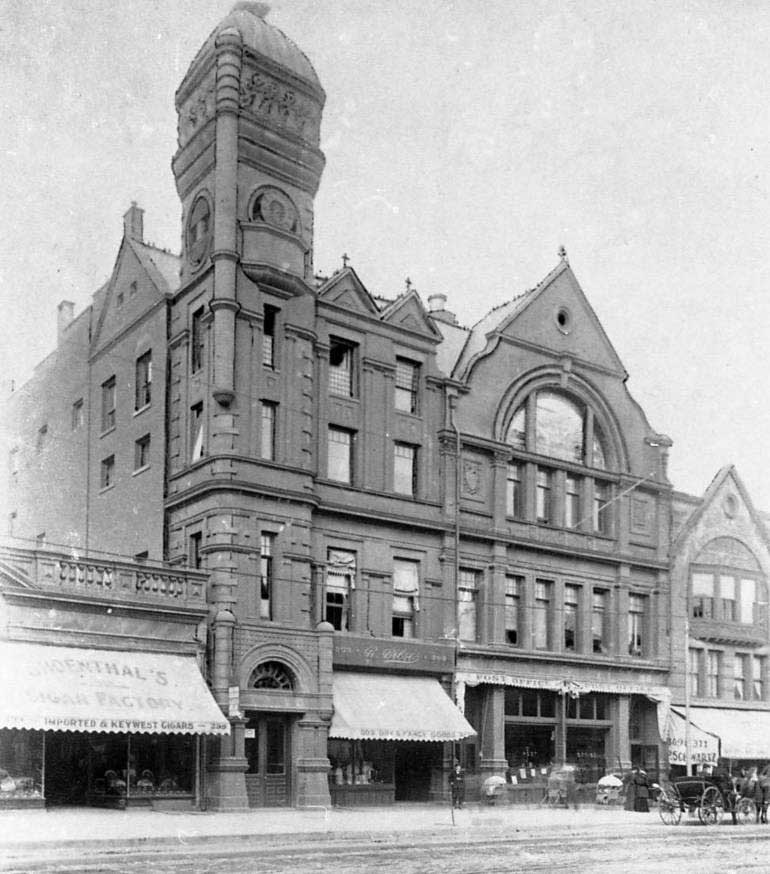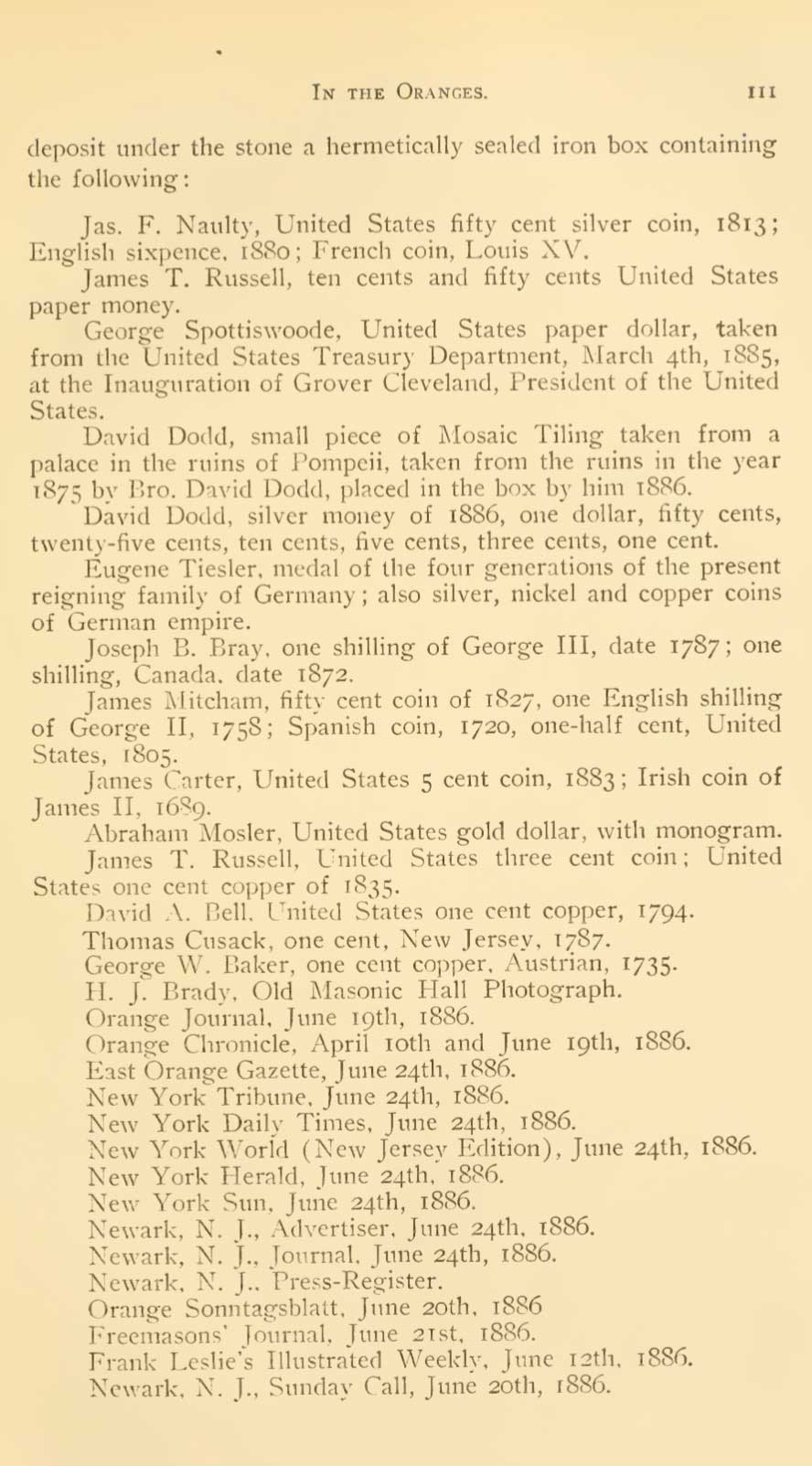
A century-old collection of freemason artifacts was lost when the historic Masonic Temple in Orange burned down two months ago.
The artifacts had been put in a time capsule fashioned out of a hermetically sealed iron box, then secured behind a brick the year the building at 235 Main Street was dedicated in 1887. What the collection contained was a mystery as only one member of Union Lodge 11 — an 86-year-old man — is alive and he couldn’t remember what was stowed within the walls.

However, Jersey Digs discovered a list of relics, which are more exotic than the freemasons imagined. The book One Hundred Years of Masonry in the Oranges, published in 1909, contains an elaborate history of Union Lodge 11, as well as details of the dedication ceremony and the time capsule, naming each artifact.
Most of the members contributed foreign coins from the 17th, 18th, and 19th centuries. But the capsule also included a mosaic tile from the ruins at Pompeii and a royal medal from Kaiser Wilhelm II of Germany.

The freemasons are a quasi-religious fraternity organized by lodges. The first lodge came to the United States from England in the 18th century and named Benjamin Franklin as its grand master. The Union Lodge in Orange was founded in 1809 and its inaugural officers were Orange’s most prominent residents. Those familiar with the city’s street names will recognize the surnames of local freemasons like Jeptha Baldwin, Stephen Day, and Benjamin Lindsley.
The Masonic Temple was one of the architectural jewels of downtown Orange before it caught fire this April 19. Its rust-colored facade was made of Philadelphia pressed brick and its six-story tower was the second-tallest edifice on Main Street. The lodge long met on the third floor while a banquet hall was on the fourth floor.
Before the multiple-alarm fire, the freemasons of Livingston Lodge 11 and a commissioner of Orange’s historic preservation commission had attempted to gain permission from the current owners of the building to document the historic interior and salvage the lost freemason artifacts. However, the owner denied them entry.
“The owners couldn’t care less,” Guy Notte, a freemason of Livingston Lodge 11, told Jersey Digs.
Meanwhile, Joe Fagan, town historian of West Orange, announced that he had managed to pull a number of architectural relics, including terra cotta ornaments and a pilaster, out of the rubble. While some are grateful that something meaningful could be preserved from the former hall, it is unclear what Fagan plans to do with those objects. It has also sparked a debate about whom those objects belong to and the limits of architectural salvage. Legally, a person salvaging items from a building scheduled for demolition must buy salvage rights from the demolition company. Fagan, who serves as public information officer of West Orange, hasn’t replied to attempts to reach him.
The origins of freemasonry are somewhat esoteric, rooted in the belief that masonry, particularly the building of houses of worship, is a sacred undertaking. More than a dozen U.S. presidents were freemasons.
In the 19th century, Union Lodge 11, commissioned an exhaustive history of its fraternity, called One Hundred Years of Masonry in the Oranges. The book included a copy of a speech given on the day the Masonic Temple was dedicated that sums up its mystical origins.
“The exact beginning of our society in the dim and shrouded past is involved in mystery, which no human research has been able, with entire certainty, to penetrate,” the speech reads. “But with the aid of scriptural story and Masonic tradition, we can, with sufficient warrant, trace the existence of Free Masonry far back into the remotest recesses of time.”